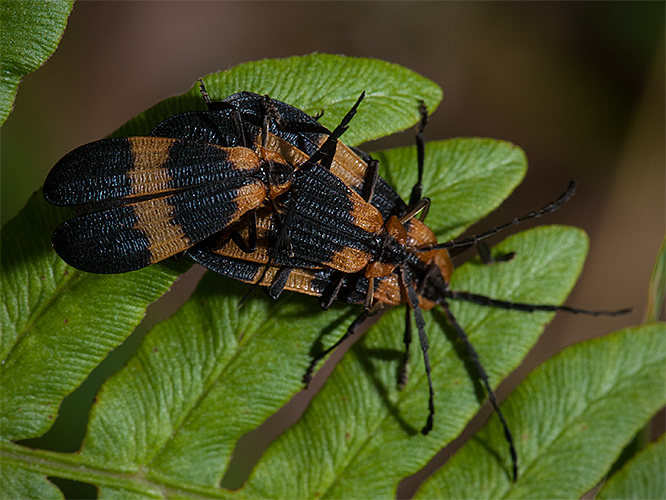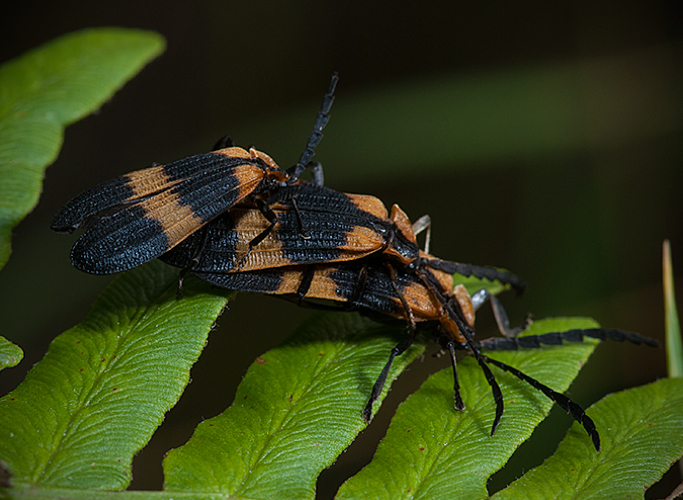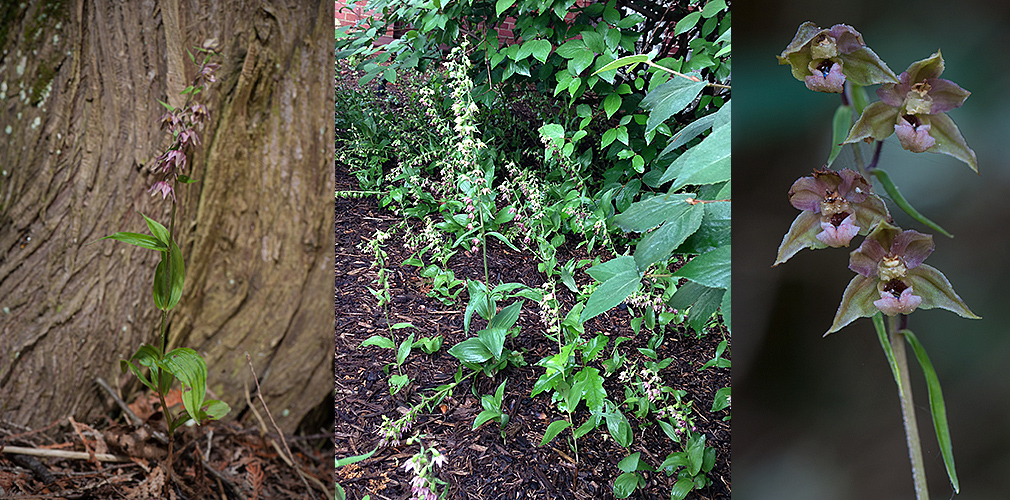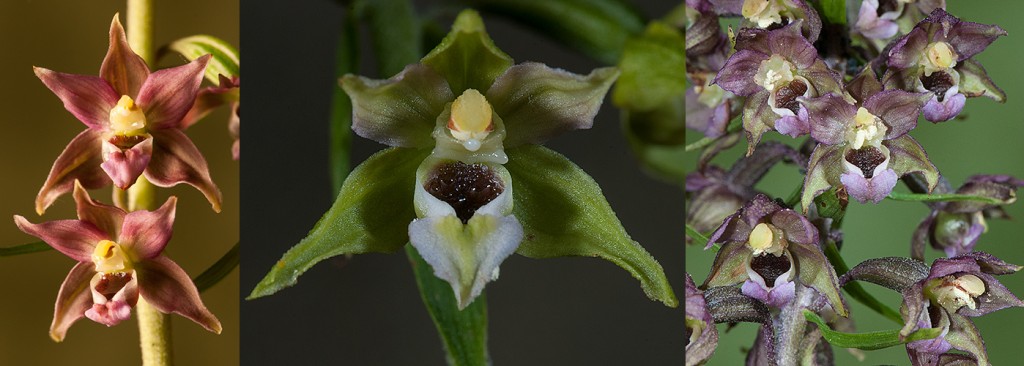I found a group of three insects, whose species I did not know, on a Bracken Fern near Grayling, Michigan. After returning home, I consulted Insects of the North Woods by Jeffery Hahn and saw a photo of a yellow Net-winged Beetle that shared its shape with my mystery beetle. So I searched the Internet for “brown net-wing beetle” and found a photo that looked like my beetle, a banded net-winged beetle named Calopteron discrepans. I searched bugguide.net (a great insect website) for Calopteron discrepans and discovered a similar species Calopteron reticulatum. I consulted the Peterson Field Guide to the Beetles and it said, “C. discrepans, 9.5-15mm, is similar to C. reticulatum” but did not explain how the two species are differentiated.
Several websites explained that the black band closest to the head is uniform in width on C. discrepans and wider in the middle on C. reticulatum. This means my beetle is C. reticulatum. The two species have the same common name Banded Net-winged Beetle and might not even be distinct species but only subspecies. This species is also called Reticulated Net-winged Beetle.
The beetle does possess an interesting shape. This is one of the moth mimics. Supposedly, the moth tastes bad and birds do not want to eat you if they think you are that moth. It also proves that even after thirty-years of fieldwork in the Grayling area there are still new things to find.
Copyright 2013 by Donald Drife
Webpage Michigan Nature Guy
Follow MichiganNatureGuy on Facebook






